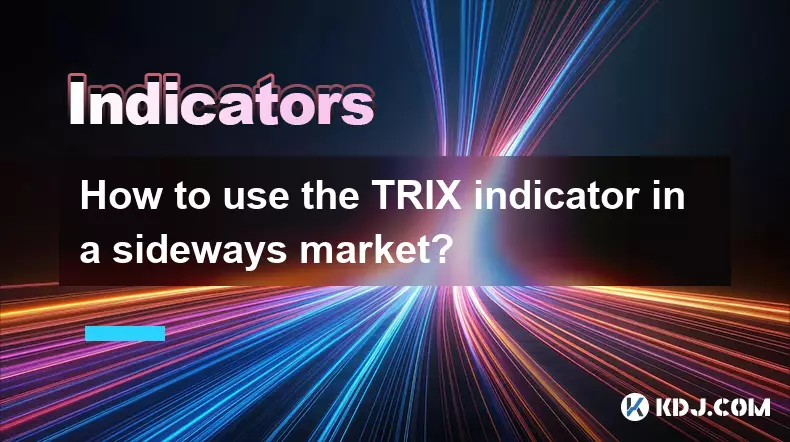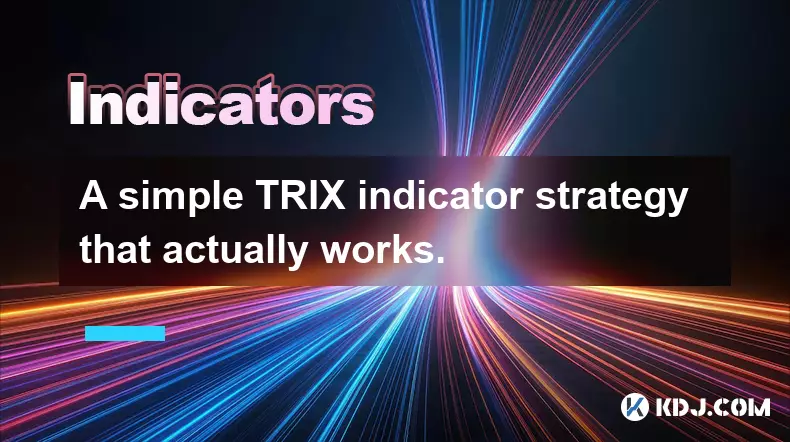-
 bitcoin
bitcoin $105968.894684 USD
4.17% -
 ethereum
ethereum $3639.320047 USD
7.62% -
 tether
tether $1.000339 USD
0.06% -
 xrp
xrp $2.407774 USD
5.96% -
 bnb
bnb $1011.704193 USD
2.28% -
 solana
solana $166.942754 USD
6.37% -
 usd-coin
usd-coin $1.000143 USD
0.03% -
 tron
tron $0.291515 USD
0.25% -
 dogecoin
dogecoin $0.181682 USD
4.06% -
 cardano
cardano $0.585450 USD
4.54% -
 hyperliquid
hyperliquid $42.099968 USD
5.20% -
 chainlink
chainlink $16.160745 USD
5.45% -
 zcash
zcash $645.269648 USD
12.96% -
 bitcoin-cash
bitcoin-cash $507.430338 USD
2.80% -
 stellar
stellar $0.290357 USD
3.69%
How to Use the Parabolic SAR for Trailing Stops in Crypto Trading
The Parabolic SAR helps crypto traders identify trend reversals and set dynamic trailing stops, making it a valuable tool for managing risk in volatile markets.
Oct 30, 2025 at 05:18 am

Understanding the Parabolic SAR Indicator in Crypto Markets
1. The Parabolic SAR (Stop and Reverse) is a technical analysis tool developed by J. Welles Wilder Jr., designed to identify potential reversals in market price movement. In the volatile environment of cryptocurrency trading, this indicator helps traders spot trend direction and possible entry or exit points. It appears as a series of dots placed above or below the price candles on a chart. When the dots are below the price, it signals an uptrend; when above, a downtrend.
2. Cryptocurrencies often experience sharp directional moves, making trailing stop mechanisms essential for preserving profits during strong trends. The Parabolic SAR dynamically adjusts its position relative to price action, allowing it to function effectively as a trailing stop-loss tool. As the price advances in a favorable direction, the SAR dots gradually move closer, locking in gains while giving the trade room to breathe.
3. One key advantage of using Parabolic SAR in crypto trading is its simplicity. Traders don’t need complex calculations or multiple indicators to interpret its signals. A change in dot placement—such as from below to above the price—can trigger a sell signal, indicating a potential reversal. This makes it particularly useful for automated strategies or traders seeking clear rules-based systems.
4. However, the Parabolic SAR performs best in trending markets. During sideways or choppy conditions common in low-volume altcoin pairs, it can generate false signals. Therefore, combining it with other tools like moving averages or volume indicators improves reliability. For instance, confirming a SAR-generated sell signal with declining volume adds confidence in the decision.
5. Adjusting the acceleration factor in the SAR formula allows customization based on volatility. Most platforms default to 0.02 for the initial step and 0.2 for maximum acceleration. In highly volatile crypto assets like Bitcoin or Ethereum, increasing the step value slightly may reduce premature exits during normal pullbacks.
Implementing Parabolic SAR as a Trailing Stop Strategy
1. To use Parabolic SAR as a trailing stop, traders set their stop-loss order at the level of the most recent SAR dot. In an uptrend, each new SAR dot provides a higher stop-loss level, protecting accumulated profits. If the price drops to touch or fall below the SAR dot, the position is closed, securing gains up to that point.
2. In a live crypto trading scenario, imagine buying Ethereum at $2,800 during a confirmed uptrend. As the price rises to $3,100, the SAR dots follow beneath each candle, gradually increasing in value. The trader maintains the long position as long as the price stays above the SAR line. Once the price dips and touches the SAR level—say at $3,050—the trailing stop triggers, exiting the trade with a near-optimal profit.
3. This method eliminates emotional decision-making. Instead of guessing when to take profits, traders rely on a mechanical rule derived from price behavior. The SAR adapts to momentum shifts, tightening stops faster as trends accelerate due to its built-in acceleration mechanism.
4. Short sellers also benefit from this approach. When the SAR dots appear above the price, they serve as dynamic resistance levels. A short position can be protected by placing a trailing stop just above the latest SAR dot. If the price climbs to meet it, the stop activates, limiting losses if the downtrend reverses.
5. Backtesting this strategy across major cryptocurrencies reveals consistent performance during extended bull or bear runs. For example, applying SAR-based trailing stops during Bitcoin’s 2023 upward surge would have locked in substantial gains before the eventual correction. Historical data shows fewer whipsaws compared to fixed percentage-based stops.
Optimizing Parabolic SAR Settings for Volatile Assets
1. Default SAR parameters may not suit all digital assets. High-frequency traders dealing with meme coins might prefer a lower acceleration factor to avoid being shaken out by sudden spikes. Conversely, long-term holders of stable large-cap cryptos could increase the step size to stay in trends longer despite minor retracements.
2. Pairing the SAR with an Exponential Moving Average (EMA) filter enhances accuracy. Only taking buy signals when the price is above the 50-period EMA ensures alignment with broader momentum. This combination reduces noise in fast-moving markets where SAR alone might flip too frequently.
3. Timeframe selection plays a critical role. On shorter intervals like 15-minute charts, SAR generates more signals but increases risk of false triggers. Daily or 4-hour charts provide cleaner, more reliable trailing levels suitable for swing traders managing larger positions.
4. Traders should monitor asset-specific volatility patterns when adjusting SAR settings. Coins with high beta relative to Bitcoin often require tighter SAR configurations to prevent oversized drawdowns.
5. Some advanced trading bots allow integration of custom SAR logic into execution algorithms. These bots automatically update stop-loss orders based on real-time SAR values, ensuring no delay between signal generation and action. This precision matters in decentralized exchanges where slippage can erode margins.
Frequently Asked Questions
What does a flip in Parabolic SAR dots indicate?A flip occurs when the dots move from below to above the price, or vice versa. In crypto trading, this typically signals a potential trend reversal. When the dots shift below the candles, it suggests bullish momentum; when they rise above, bearish pressure may be building.
Can Parabolic SAR be used alone for crypto trading decisions?While possible, relying solely on SAR increases exposure to false signals during consolidation phases. Combining it with volume analysis or trend confirmation tools significantly improves decision quality, especially in low-liquidity altcoin markets.
How does volatility affect Parabolic SAR performance?High volatility can cause SAR to trail too closely behind price, leading to early exits during healthy corrections. Adjusting the acceleration factor or using it on higher timeframes mitigates this issue, helping traders remain in strong trends longer.
Is Parabolic SAR effective for both spot and futures trading?Yes, it works well in both environments. In futures trading, its ability to act as a dynamic stop-loss aligns perfectly with leverage management. Spot traders use it to protect unrealized gains without needing to predict exact tops or bottoms.
Disclaimer:info@kdj.com
The information provided is not trading advice. kdj.com does not assume any responsibility for any investments made based on the information provided in this article. Cryptocurrencies are highly volatile and it is highly recommended that you invest with caution after thorough research!
If you believe that the content used on this website infringes your copyright, please contact us immediately (info@kdj.com) and we will delete it promptly.
- BMW, Speeding, Biker Killed: A Deadly Intersection of Speed and Luxury
- 2025-11-10 16:30:06
- Pi Network's Decentralized Future: Mainnet Milestones and a Community with Heart
- 2025-11-10 14:55:01
- Bybit's On-Chain Earn: Stake Polkadot (DOT) and Tokenized Equities Take Center Stage
- 2025-11-10 15:35:01
- Bitcoin Seizure, China Scam, and Wealth Fraud: A Deep Dive
- 2025-11-10 15:30:01
- Pi Network, Autonomous Accounting, and Global Finance: A New Era?
- 2025-11-10 15:10:01
- PUMP Token: An In-Depth Look at Market Movements and Institutional Interest
- 2025-11-10 15:00:01
Related knowledge

What's the best way to learn the TRIX indicator?
Nov 10,2025 at 12:39pm
Understanding the Basics of the TRIX Indicator1. The TRIX (Triple Exponential Average) indicator is a momentum oscillator designed to filter out short...

How do professional traders use the TRIX indicator?
Nov 06,2025 at 04:40pm
Understanding the TRIX Indicator in Crypto TradingThe TRIX (Triple Exponential Average) indicator is a momentum oscillator used by professional trader...

Can I use the TRIX indicator on my mobile trading app?
Nov 07,2025 at 07:40pm
The TRIX indicator, a momentum oscillator designed to filter out short-term fluctuations and highlight long-term trends, has become increasingly popul...

How to use the TRIX indicator in a sideways market?
Nov 10,2025 at 03:00pm
Bitcoin’s Role in Decentralized Finance Evolution1. Bitcoin remains the cornerstone of decentralized finance, serving as both a store of value and a b...

How to code a simple TRIX indicator script in Pine Script?
Nov 07,2025 at 06:20am
How to Code a Simple TRIX Indicator in Pine Script The TRIX (Triple Exponential Moving Average) indicator is widely used in cryptocurrency trading to ...

A simple TRIX indicator strategy that actually works.
Nov 08,2025 at 05:39pm
Understanding the TRIX Indicator in Crypto Trading1. The TRIX (Triple Exponential Average) indicator is a momentum oscillator designed to filter out s...

What's the best way to learn the TRIX indicator?
Nov 10,2025 at 12:39pm
Understanding the Basics of the TRIX Indicator1. The TRIX (Triple Exponential Average) indicator is a momentum oscillator designed to filter out short...

How do professional traders use the TRIX indicator?
Nov 06,2025 at 04:40pm
Understanding the TRIX Indicator in Crypto TradingThe TRIX (Triple Exponential Average) indicator is a momentum oscillator used by professional trader...

Can I use the TRIX indicator on my mobile trading app?
Nov 07,2025 at 07:40pm
The TRIX indicator, a momentum oscillator designed to filter out short-term fluctuations and highlight long-term trends, has become increasingly popul...

How to use the TRIX indicator in a sideways market?
Nov 10,2025 at 03:00pm
Bitcoin’s Role in Decentralized Finance Evolution1. Bitcoin remains the cornerstone of decentralized finance, serving as both a store of value and a b...

How to code a simple TRIX indicator script in Pine Script?
Nov 07,2025 at 06:20am
How to Code a Simple TRIX Indicator in Pine Script The TRIX (Triple Exponential Moving Average) indicator is widely used in cryptocurrency trading to ...

A simple TRIX indicator strategy that actually works.
Nov 08,2025 at 05:39pm
Understanding the TRIX Indicator in Crypto Trading1. The TRIX (Triple Exponential Average) indicator is a momentum oscillator designed to filter out s...
See all articles





















![The Graph Price Prediction [GRT Crypto Price News Today] The Graph Price Prediction [GRT Crypto Price News Today]](/uploads/2025/11/07/cryptocurrencies-news/videos/690d4df44fe69_image_500_375.webp)




















































